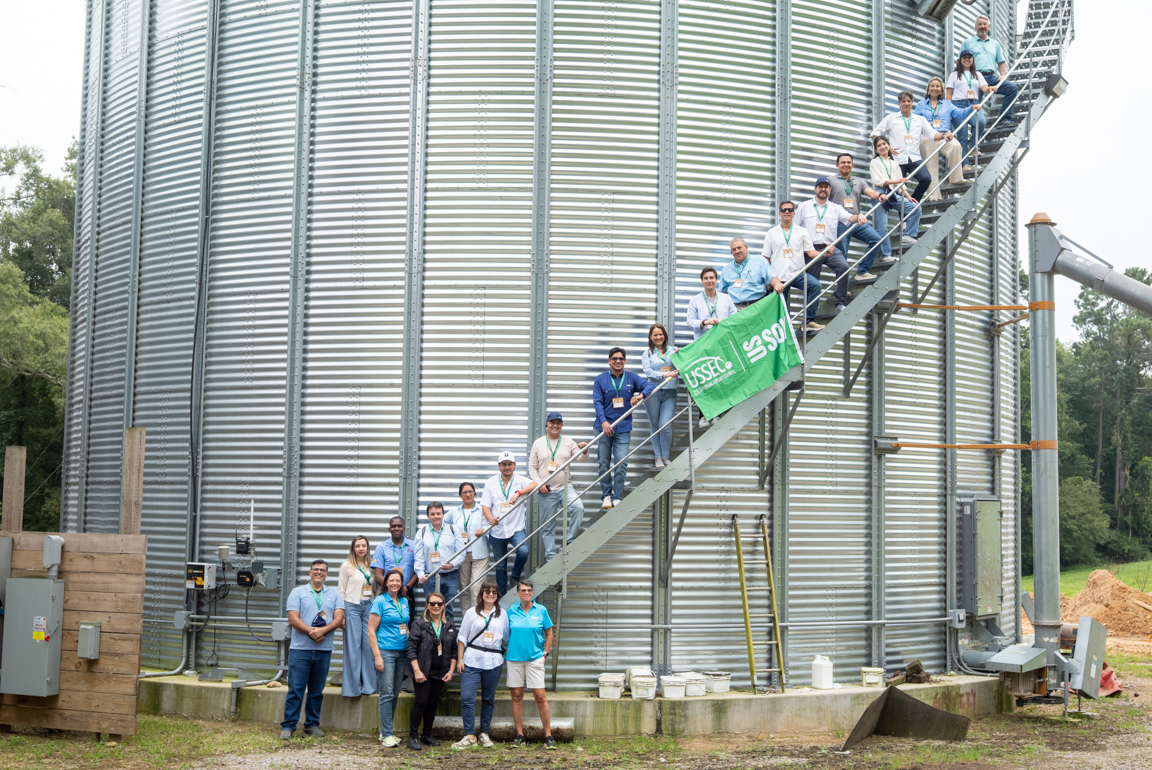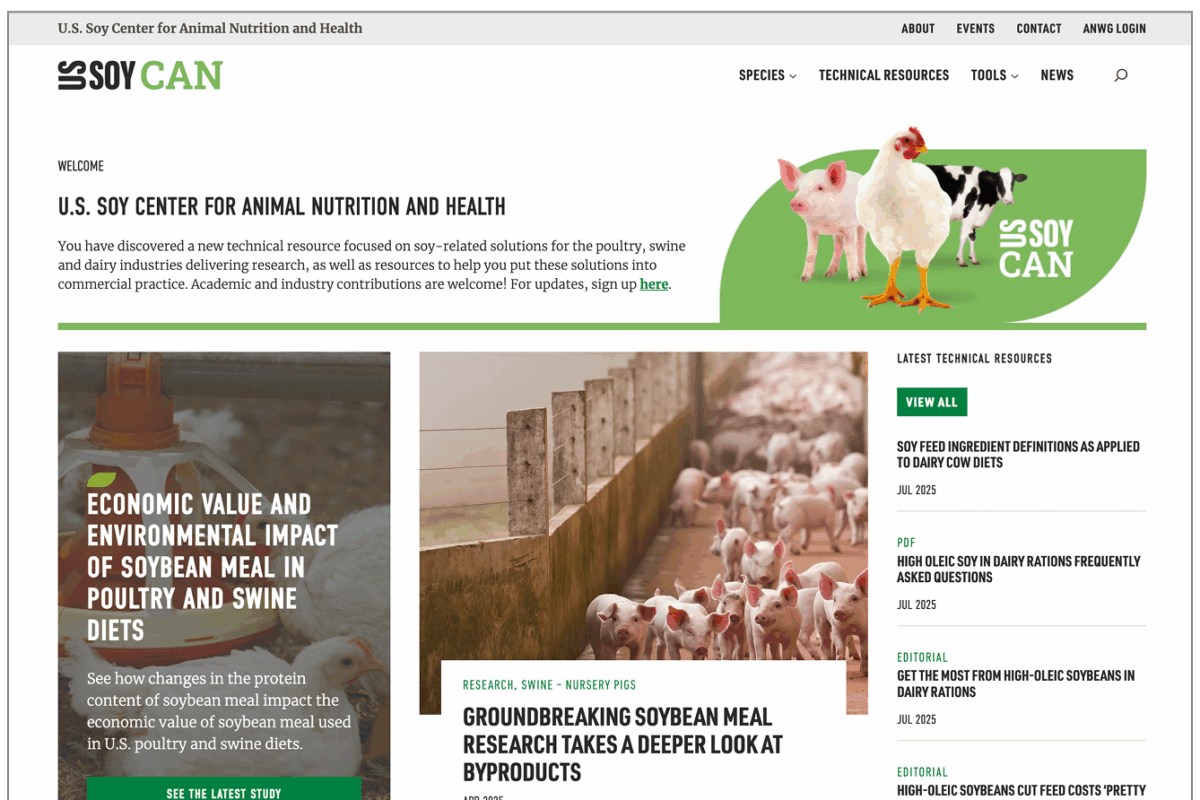USDA Confirms there’s Space on the Plate for Soy

Dietary Guidelines Help Consumers and Soybean Farmers
“What’s for dinner?” often changes into “What should be for dinner?” An endless sea of options makes it challenging to find the healthiest choices for your dinner plate. U.S. soybean farmers, through their checkoff, have proven one choice is a safe bet — whether it’s as a plant-based protein, an alternative to dairy or a heart-healthy cooking oil. That choice is soy.
When the U.S. Department of Agriculture recently published its recommendations to help Americans make healthy food and beverage choices, those recommendations confirmed soy’s place at American tables. Good news for consumers and soybean farmers.
Building Soy’s Reputation
The soy checkoff works for U.S. farmers in all the ways soy is consumed. Beyond soy inclusion in animal diets, which is the No. 1 use of soybean meal, the checkoff recognizes the value of soy consumption in human diets. By funding projects identified with the Soy Nutrition Institute, farmer-leaders of the checkoff can understand the nutritional benefits of soy and enhance its reputation with health professionals and consumers.
Through SNI, the soy checkoff engages with nutrition experts across industries based on the specific needs of end-use customers of soy products, such as packaged food companies and ingredient suppliers. Those end users report their consumers are looking for options and clarity.
Joy Blakeslee, a registered dietitian nutritionist, says consumers often ask doctors, nurses and physician assistants for dietary advice, yet these professionals receive little nutrition education as part of their formal training.
“The dietary guidelines are a critical tool for health professionals,” Blakeslee says. “They help general health care providers give their patients science-based recommendations for making healthy, nutrient-dense food choices in their daily lives.”
Health claims and labels from the U.S. Food and Drug Administration also clarify which foods meet specific requirements that support healthy living. The new guidelines support soy as a nutritious food and trusted ingredient for almost any diet.
April Hemmes, soy checkoff farmer-leader from Iowa, says she knows the soybeans she grows provide important nutrients and protein for people. But the research to prove it is important.
“Our soy checkoff has been great at funding and promoting needed research for years,” Hemmes says. “Not only do we do research on proteins, but also to understand the heart health benefits of soybean oil, for example.”
Beyond the impression of soy’s nutritional content, checkoff research is showing an important correlation between consumer attitudes of soy and U.S. soybean farmer sustainability practices.
“Consumers who think soy is ‘healthy’ are also significantly more likely to feel positively after learning that the soybeans used to make soybean oil and soy foods are a sustainable crop,” Blakeslee says.
Hemmes underlines the importance of investing checkoff funds to understand soy customers and build U.S. soy’s reputation among them.
“It’s the best possible collaboration when you bring farmers and industry experts together to produce what consumers are looking for,” Hemmes says.
Soy in the Guidelines
In the new dietary guidelines, research is front and center. According to Blakeslee, an advisory board of scientists vets the guidelines, only including foods supported by science as healthful.
The 2020-2025 Dietary Guidelines for Americans highlight soy as a complete protein and a healthy choice in four of its six categories: dairy, oils, vegetables and protein foods. Soy offers health benefits and heart-healthy options for people with dairy sensitivities, those wanting to reduce saturated fat, or folks simply wanting plant-based foods.
“Soy foods are sources of heart-healthy, high-quality plant protein that fit seamlessly into a variety of diets,” says SNI Executive Director Mark Messina, Ph.D. “As interest in plant-based diets continues to surge, consumers can be confident in soy as a protein source throughout the life span.”
According to the authorized health claim about soy protein from the FDA, regular consumption of 25 grams of soy protein daily has been associated with reducing cardiovascular disease risk. In 2017, soybean oil received a heart-healthy distinction from the FDA through a qualified health claim. The new dietary guidelines showcase soybean oil alongside other popular heart-healthy choices, such as tree nuts and olive oil.
Health claims from the FDA allow companies to use specific language on their labels to promote the health attributes of soy. Consumers can clearly see the benefits of soy as a part of their diet. These labels help companies market their soy products with the scientific backing to prove it.
Hemmes says she thinks the labels are an opportunity to get facts to companies and consumers in order to build the positive reputation of soy.
“I want people to make informed decisions about their diets,” Hemmes says. “If they choose to incorporate plant-based into their diet, I want them to get the facts about the benefits of soy protein.”
Soy protein is one of the few widely available complete plant-based proteins, Blakeslee says. Soy provides all nine essential amino acids in appropriate amounts to meet the needs of children and adults.
“Some people are looking for a plant-based protein due to dietary preferences or restrictions,” Blakeslee says. “In fact, the protein found in soybeans is a high-quality option.”
For children, Blakeslee says fortified soy beverages are the only plant-based dairy option approved by health professionals for children ages one to five.
“If your child can’t tolerate traditional dairy, soy is the go-to plant-based beverage,” says Blakeslee.
U.S. soybean farmers, through their checkoff, have invested in understanding why soy is an excellent choice in your diet. As a plant-based protein option, a dairy alternative or a heart-healthy cooking oil, soy is a healthy choice on any plate.



